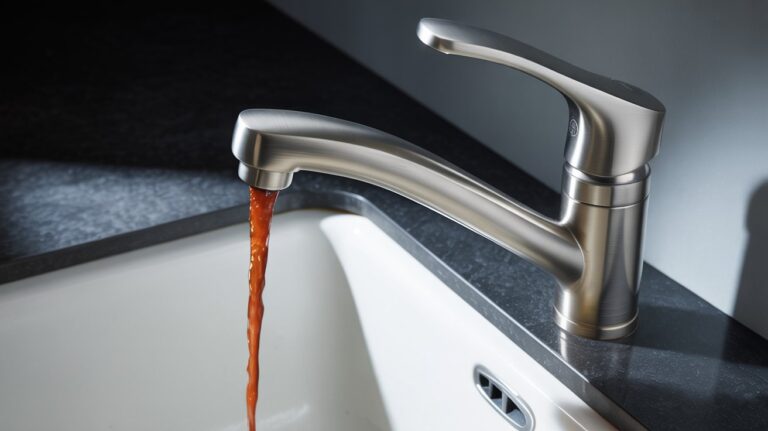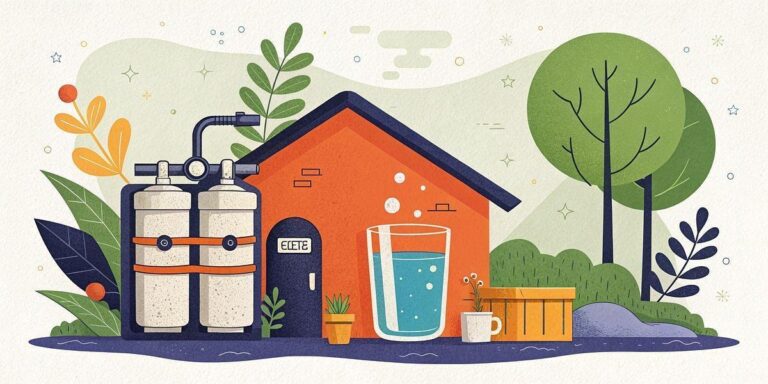Can Well Water Make You Sick: Understanding the Risks
Have you ever wondered if your well water could be affecting your health? Understanding the potential risks associated with well water is crucial for anyone relying on it for daily needs. While many people assume that well water is pure and safe, it’s important to be aware of the various factors that can influence its safety and quality.
Understanding Well Water and Its Sources
Well water comes from underground sources and can be a fantastic solution for homes not connected to municipal water systems. However, the quality of well water can be surprisingly variable, largely affected by its source and the surrounding environment.
How Does Well Water Get Contaminated?
When you think about where well water originates, it becomes easier to understand how it can be contaminated. Water seeps through soil and rock, often collecting minerals and other impurities along the way. While natural filtration processes can help purify the water, they are not always foolproof.
Various contaminants, both natural and man-made, might make their way into well water. Natural contaminants could include bacteria and viruses that are present in the soil, while man-made contaminants often result from agricultural runoff, industrial activities, or improper waste disposal.
Common Contaminants in Well Water
You might be curious about what specific contaminants can invade your well water. Here’s a detailed list to consider:
| Contaminant | Sources | Potential Health Effects |
|---|---|---|
| Bacteria | Soil, human and animal waste | Gastrointestinal illnesses, infections |
| Viruses | Human and animal waste | Gastroenteritis, other infections |
| Nitrates | Fertilizers, animal waste, septic systems | Methemoglobinemia (blue baby syndrome) |
| Heavy metals | Natural deposits, industrial pollution | Various diseases and developmental issues |
| Pesticides | Agricultural runoff | Cancer, reproductive and hormonal issues |
| Arsenic | Natural deposits, industrial pollution | Cancer, skin disorders, diabetes |
| Radon | Natural deposits | Lung cancer |
Recognizing these potential contaminants is the first step in figuring out how well water can make you sick, helping you make informed decisions about your water quality.
Testing and Analyzing Your Well Water
Testing your well water is a proactive approach towards ensuring its safety. Regular testing enables you to identify contaminants early and address any potential health risks they pose.
How Often Should You Test Your Well Water?
Regular testing is essential, but how frequent should you make this a routine? Typically, it’s advisable to test your well water at least once a year. However, you should test more frequently if:
- Your area has a history of groundwater contamination.
- You notice any changes in taste, odor, or color.
- There’s been a flood or other environmental events that might affect water quality.
- You’re using water for drinking or culinary purposes.
What Tests Should You Conduct?
Tests vary depending on the specific threats applicable to your region, but here are the most common tests:
- Bacteria: Total coliform and E. coli tests are standard indicators of bacterial contamination.
- Nitrates and Nitrites: Especially vital if pregnant women or infants use the water.
- Minerals and Metals: Test for lead, arsenic, and other heavy metals that pose health risks.
- Volatile Organic Compounds (VOCs): Identify chemicals from industrial smells, solvents, or fuels.
- Radiological Testing: If you are in an area with high radon levels.
By conducting these tests, you can guarantee the well water’s safety and spot any anomalies early on.

Treating Contaminated Well Water
If testing reveals contamination, it’s essential to treat your well water to ensure it’s safe for consumption and other uses.
Different Treatment Methods
There are several treatment technologies available. Each method targets specific contaminants, underscoring the importance of knowing precisely what’s in your well water. Here’s an overview of effective treatment methods:
| Treatment Method | Effective Against | How it Works |
|---|---|---|
| Filtration | Sediments, rust, some chemicals | Physically filters out particles and contaminants |
| Distillation | Most impurities | Boils water and condenses the steam |
| Ultraviolet (UV) Treatment | Bacteria, viruses | Uses UV light to kill pathogens |
| Reverse Osmosis | Bacteria, heavy metals, most chemicals | Filters water through a semipermeable membrane |
| Chlorination | Bacteria, most viruses | Adds chlorine to kill microorganisms |
| Ion Exchange | Hardness, heavy metals | Swaps ions in water with ions in a solution or resin |
Each treatment method has pros and cons, so it’s prudent to select the one that best fits your specific needs and budget constraints.
Maintaining Your Treatment System
Once you install a treatment system, regular maintenance is essential to ensure it continues to work effectively. This can involve changing filters, conducting performance checks, and ensuring you have adequate replacement parts.
Legal Standards and Regulations
Being well-informed about governmental regulations and standards can be reassuring and guide you in maintaining your water’s quality.
U.S. Regulations and Standards
While the U.S. Environmental Protection Agency (EPA) regulates public water systems, private wells are not federally regulated. However, state or local health departments might have specific guidelines. Familiarize yourself with these local guidelines to ensure compliance and safeguard your health.
International Perspectives
If you are located outside the U.S., the regulations around well water might differ. Countries often have their own standards and certifications, influenced heavily by their local geology and specific health concerns related to well water.

Safeguarding Your Health
Taking the necessary precautions when using well water is crucial. Awareness and pre-emptive actions can protect you and your loved ones from health risks.
Educating Your Household
Start by ensuring everyone in your household understands the potential dangers of untreated well water. Teach them the significance of vetting water regularly, recognizing signs of contamination, and steps to take if they suspect water is unsafe.
Addressing Immediate Health Concerns
If you suspect contamination after experiencing symptoms or after a test, it’s vital to address the situation promptly:
- Stop Using the Water: Use bottled or alternative water sources until you confirm safety.
- Consult Health Professionals: Visit a healthcare provider for an assessment and any necessary treatment.
- Notify Local Health Authorities: They might provide additional resources and might already have relevant data about regional contamination issues.
The Future of Well Water Safety
With advancements in technology and increased awareness, the future holds promise for safer well water consumption.
Emerging Technologies
Innovations such as smart sensors and AI technology can forecast and detect contamination issues early, allowing homeowners to address them before they become severe.
Sustainable Practices
Exploring sustainable solutions, like rainwater harvesting systems to supplement well water, or planting vegetation to naturally filter surface run-off, can provide more extensive security and reduce contamination risks.
Conclusion
In navigating well water use, understanding the risks, staying informed about local regulations, conducting regular testing, and implementing effective treatment methods can significantly minimize health risks. Although the responsibility largely falls on you as a well owner, taking these proactive measures ensures peace of mind and secure, clean water for your household. Your health and the well-being of your family deserve the diligence and attention these practices entail. The journey to safe well water is ongoing and achievable, given the right knowledge and resources.







